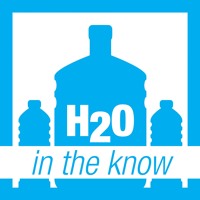International Bottled Water Association | MEDIA STATEMENT | August 13, 2019
Per- and polyfluoroalkyl substances (PFAS) and bottled water
Alexandria, VA – Currently, there is no U.S. Food and Drug Administration (FDA) Standard of Quality for per- and polyfluoroalkyl substances (PFAS) in bottled water. However, although not mandated by law, as of January 1, 2019, IBWA requires its members to test for PFAS in all the products they sell. This action underscores the commitment of IBWA members to always provide consumers with the safest and highest quality bottled water products. Testing for PFAS provides consumers, local and state governments, and disaster and emergency relief personnel further assurance that bottled water is a safe and convenient product for everyday use and in times of need when tap water is compromised. IBWA continually monitors emerging contaminants as they apply to both FDA regulations for bottled water and U.S. Environmental Protection Agency (EPA) standards for tap water. As such, IBWA has been following the PFAS issue very closely.
For more information on FDA’s research and investigation of PFAS in foods and beverages, see: “Statement on FDA’s scientific work to understand per- and polyfluoroalkyl substances (PFAS) in food, and findings from recent FDA surveys.”
IBWA Actions on PFAS
In addition to requiring product testing, IBWA has also established the following operational control limits (OCL) for PFAS in member company bottled water products:
- 5 ppt for one PFAS
- 10 ppt for more than one PFAS
IBWA’s OCLs for PFAS are substantially below the EPA’s health advisory level of 70 parts per trillion (ppt).
Processes and practices used in producing bottled water, such as source protection, reverse osmosis, and carbon filtration greatly reduce the likelihood that PFAS would be found in bottled water. If it is, IBWA members have access to association-supplied guidance materials for monitoring and controlling PFAS levels in bottled water.
First Data Review Under New IBWA PFAS Monitoring Program
IBWA is currently conducting its first data review under the association’s new PFAS Monitoring Program, which requires testing of IBWA member bottled water for 14 PFAS compounds using EPA Method 537.
The first summary results are as follows:
- 100% of samples were below the EPA 70 ppt health advisory level
- 97.3% of samples were below the detection limit of 2 ppt (non-detect)
EPA and State Action on PFAS
The EPA has established a “Drinking Water Health Advisory Level” for PFOA and PFOS of 70 ppt in public drinking water (i.e., tap water). Public water systems that are contaminated with more than 70 ppt must notify their customers and provide an alternate source of drinking water.
To date, bottled water has been a primary alternative source for safe drinking water when tap water has been contaminated with PFAS. EPA will eventually establish a maximum contaminant level (MCL) for PFAS in tap water, but several states are now regulating, or are planning to regulate soon, these substances in public drinking water. Those states include the following:
- New Jersey has finalized new standards and monitoring requirements for perfluorononanoic acid (PFNA) for public water systems in the state. Additional new standards for PFOA and PFOS will be effective in 2020. The new standards also require bottle water companies to monitor for these substances.
- California, New York, and Massachusetts are looking at regulating PFAS at very low levels (<20 ppt).
- Other states are regulating various PFAS contaminants or have established PFAS data reporting programs, and that data may be posted online.
PFAS Background
PFAS are a group of man-made chemicals that includes PFOA, PFOS, GenX, and many other chemicals. PFAS have been manufactured and used in a variety of industries around the globe, including in the United States, since the 1940s (not bottled water companies). PFOA and PFOS have been the most extensively produced and studied of these chemicals.
Both chemicals are very persistent in the environment and in the human body—meaning they don’t break down and can accumulate over time. There is evidence that exposure to PFAS can lead to adverse human health effects.
PFAS can sometimes be found in the following:
- Food packaged in PFAS-containing materials, processed with equipment that used PFAS, or grown in PFAS-contaminated soil or water.
- Commercial household products, including stain- and water-repellent fabrics, nonstick products (e.g., Teflon), polishes, waxes, paints, cleaning products, and fire-fighting foams (a major source of groundwater contamination at airports and military bases where firefighting training occurs).
- Workplaces that use PFAS, including production facilities or industries (e.g., chrome plating, electronics manufacturing, or oil recovery).
- Tap water, typically localized and associated with a specific facility (e.g., manufacturer, landfill, wastewater treatment plant, firefighter training facility).
- Living organisms, including fish, animals, and humans, where PFAS can build up and persist over time.
For more information about bottled water, visit IBWA’s website: www.bottledwater.org.
###
Media Contact:
Jill Culora
jculora@bottledwater.org
703.647.4609
The International Bottled Water Association (IBWA) is the authoritative source of information about all types of bottled waters, including spring, mineral, purified, artesian, and sparkling. Founded in 1958, IBWA’s membership includes U.S. and international bottlers, distributors and suppliers. IBWA is committed to working with the U.S. Food and Drug Administration (FDA), which regulates bottled water as a packaged food product, to set comprehensive and stringent standards for safe, high-quality bottled water products.
In addition to FDA regulations, IBWA member bottlers must adhere to the IBWA Bottled Water Code of Practice, which mandates additional standards and practices that in some cases are more stringent than federal and state regulations. A key feature of the IBWA Bottled Water Code of Practice is a mandatory annual plant inspection by an independent, third-party organization.
IBWA is proud to be a partner with Keep America Beautiful and a supporter of Drink Up, an initiative of former First Lady Michelle Obama and the Partnership for a Healthier America (PHA), which encourages Americans to drink more water more often – whether from the tap, a filter, or in a bottle. Choosing water is always the healthy choice.
